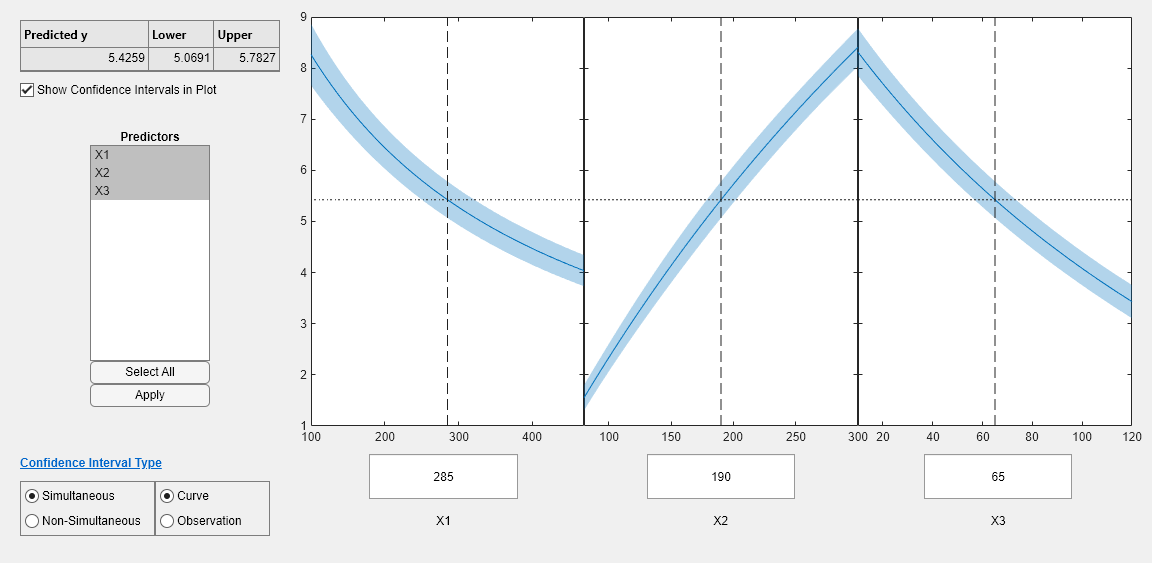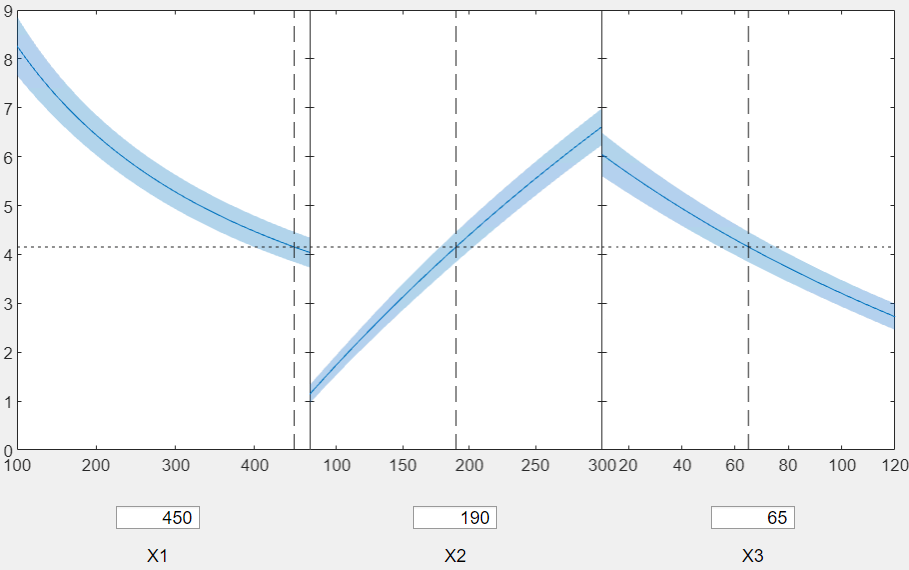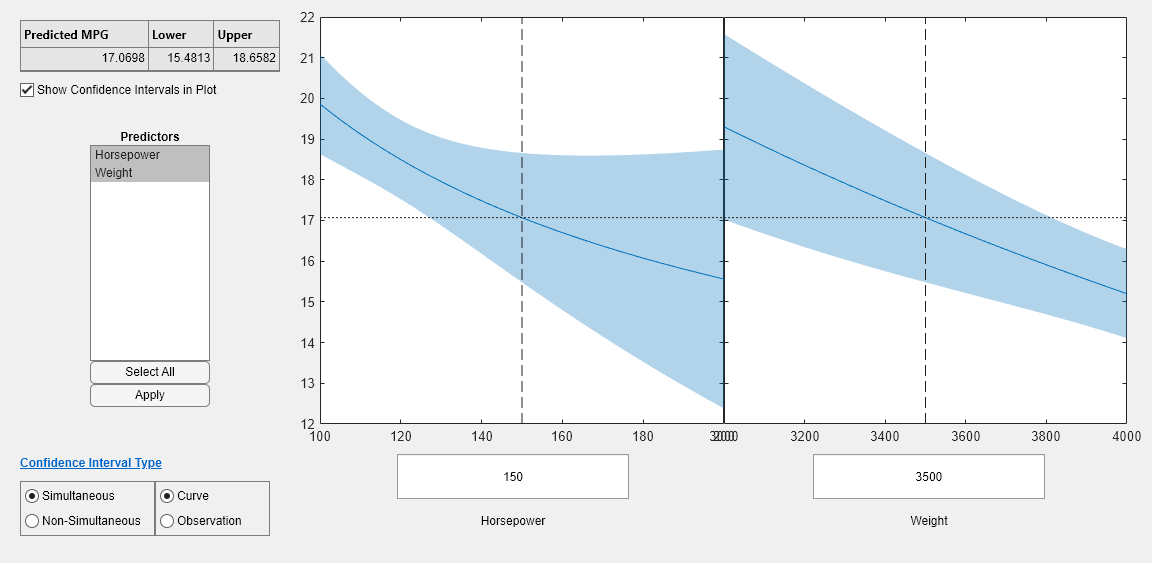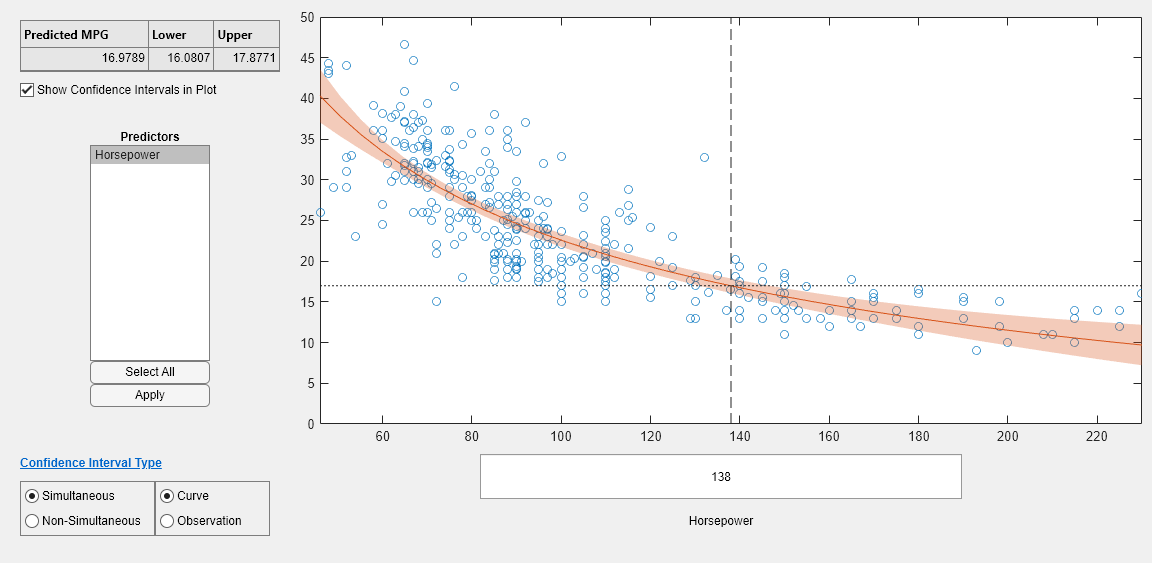plotSlice
Plot of slices through fitted nonlinear regression surface
Description
plotSlice( creates a figure
containing one or more plots, each representing a slice through the regression
surface predicted by mdl)mdl. Each plot shows the fitted response
values as a function of a single predictor variable, with the other predictor
variables held constant.
plotSlice also displays the 95% confidence bounds for the
response values. You can specify the type of confidence bounds, and select which
predictors to use for each slice plot. For more information, see Tips.
Examples
Input Arguments
Tips
Use the Confidence Interval Type menu in the figure window to choose the type of confidence bounds. You can choose simultaneous or non-simultaneous, and curve or observation.
Simultaneous or Non-Simultaneous
Simultaneous (default) —
plotSlicecomputes confidence bounds for the curve of the response values using Scheffé's method. The range between the upper and lower confidence bounds contains the curve consisting of true response values with 95% confidence.Non-Simultaneous —
plotSlicecomputes confidence bounds for the response value at each observation. The confidence interval for a response value at a specific predictor value contains the true response value with 95% confidence.
With simultaneous bounds, the entire curve of true response values is within the bounds at high confidence. By contrast, non-simultaneous bounds require only the response value at a single predictor value to be within the bounds at high confidence. Therefore, simultaneous bounds are wider than non-simultaneous bounds.
If you do not want the plot to display confidence bounds, you can clear the Show Confidence Intervals in Plot box.
Curve or Observation
A regression model for the predictor variables X and the response variable y has the form
y = f(X) + ε,
where f is a function of X and ε is a random noise term.
Curve (default) —
plotSlicepredicts confidence bounds for the fitted responses f(X).Observation —
plotSlicepredicts confidence bounds for the response observations y.
The bounds for y are wider than the bounds for f(X) because of the additional variability of the noise term.
Use the Predictors menu in the figure window to select which predictors to use for each slice plot. If the regression model
mdlincludes more than eight predictors,plotSlicecreates plots for the first five predictors by default.



